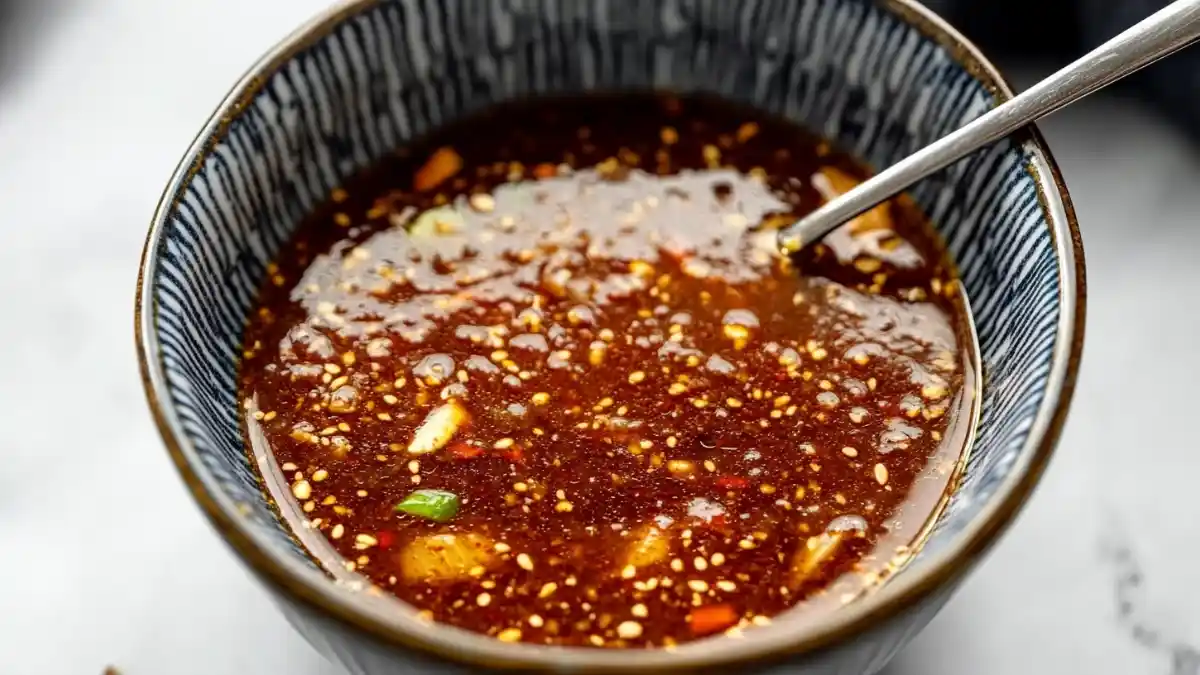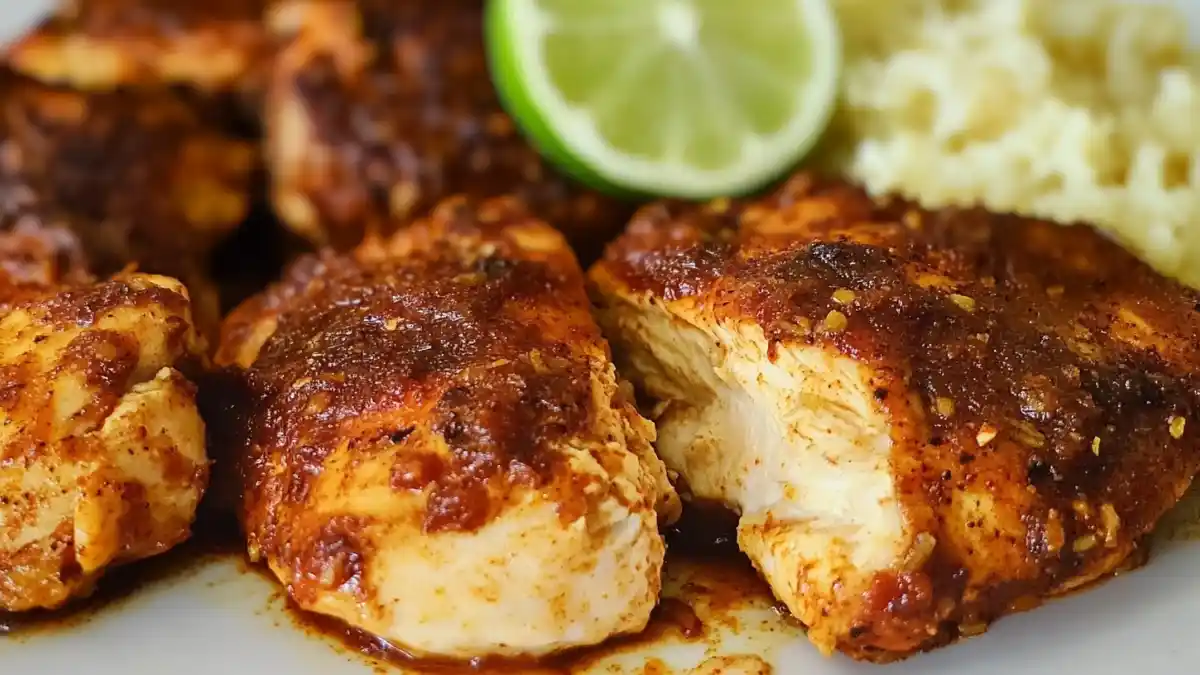Few things satisfy like a hot stir-fry loaded with crisp vegetables, tender protein, and a glossy, savory sauce. If you’ve ever wondered how to make stir fry sauce that’s simple yet bursting with bold flavors, you’ve come to the right spot. This easy stir fry sauce recipe comes together in about five minutes, delivering a flavorful punch without needing complicated steps. Whether you’re new to home cooking or a seasoned pro, this homemade stir fry sauce makes every meal feel special—no more bland takeout or thin bottled sauces.
Why You’ll Love This Stir Fry Sauce
- Fast and Foolproof: You can have this quick homemade stir fry sauce mixed and ready to go in about five minutes. It’s all about tossing a few pantry staples together—no special skills required.
- Customizable Flavors: Need a spicy stir fry sauce? Want a low-sodium stir fry sauce? Searching for a gluten-free stir fry sauce option? This recipe has you covered, thanks to quick substitutions that keep the taste vibrant.
- Perfect Consistency: Tired of watery sauces that don’t cling to your favorite ingredients? This version thickens into a velvety glaze, thanks to cornstarch.
- Budget-Friendly: Making your own sauce from scratch is more economical than grabbing a premade bottle, especially when you consider the fresh taste and the ability to control every ingredient.
- Versatile: Use it as a stir fry sauce for chicken, beef, shrimp, tofu, or veggies. Drizzle it over noodles or serve it alongside rice for a speedy yet satisfying dinner.
Ingredients Needed
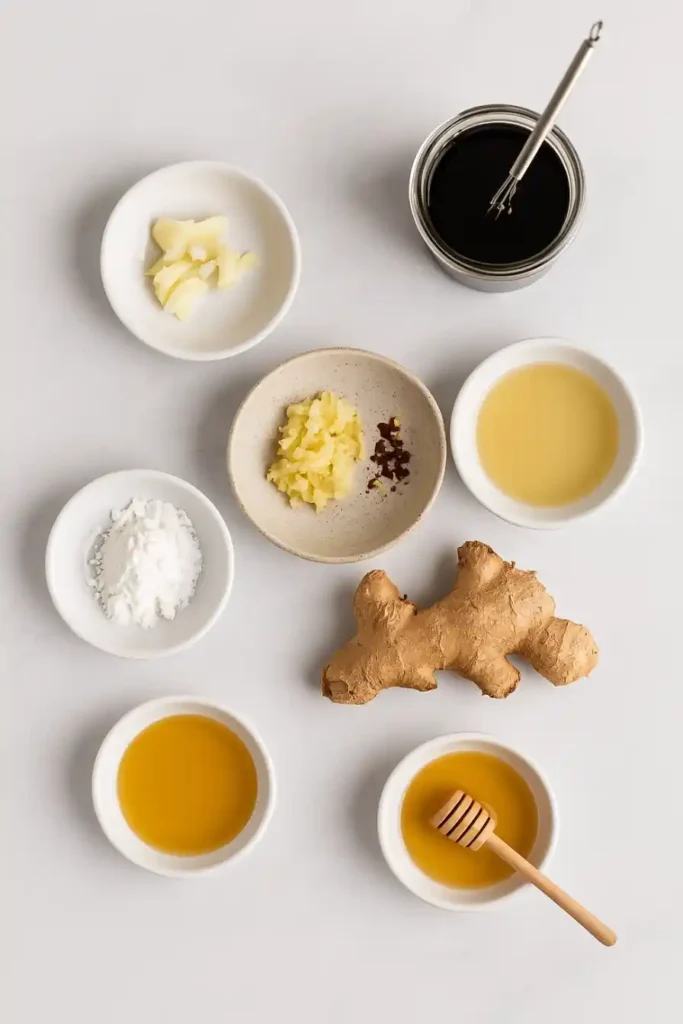
Below is the full list of what you need to make this best simple stir fry sauce. Each component is carefully chosen to give you the ideal balance of savory, sweet, and tangy:
- ½ cup low-sodium soy sauce
(Use tamari or coconut aminos for a gluten-free stir fry sauce or soy-free stir fry sauce.) - ½ cup low-sodium vegetable stock or water
(If you want to boost flavor, try chicken stock or even beef stock. For a vegan stir fry sauce, choose vegetable broth.) - 1 teaspoon sesame oil
(Adds a deep, nutty aroma—sesame oil stir fry sauce is known for its warm fragrance.) - ½ tablespoon rice vinegar
(Balances the richness of soy sauce with a hint of acidity. White vinegar or apple cider vinegar also work if that’s what you have.) - 2 cloves garlic, minced
(Fresh garlic is ideal for a ginger garlic stir fry sauce, but feel free to use garlic powder if that’s what you have on hand.) - 1–2 teaspoons grated ginger
(This lifts the sauce with a bright zing. Feel free to adjust based on your preference for heat.) - 1 tablespoon sugar or honey, up to 2 tablespoons for a sweeter sauce
(Honey stir fry sauce delivers a thicker, glossy finish. Maple syrup is a great alternative for vegans.) - 1 tablespoon cornstarch
(Essential for thickening your stir fry sauce with cornstarch. If you’re avoiding cornstarch, arrowroot powder or tapioca starch can also work.) - Pinch of red pepper flakes (optional)
(Great for those who enjoy a slight kick—boost it even more with sriracha or chili garlic paste if you want a truly spicy stir fry sauce.)
Ingredient Notes
- Soy Sauce: Low-sodium soy sauce keeps the salt level manageable. If you only have regular soy sauce on hand, reduce the amount of added salt in the dish. For a gluten-free stir fry sauce, pick tamari or coconut aminos (also good for a soy-free stir fry sauce).
- Vegetable Stock or Water: Using stock adds savory depth that plain water can’t match. If you want the sauce to be extra rich, swap in chicken or beef stock.
- Sesame Oil: A little goes a long way. This ingredient is key for that classic Asian-style taste, but avoid adding too much because it can overpower.
- Vinegar: Rice vinegar offers a gentle tang. White vinegar or apple cider vinegar can work in a pinch but may taste sharper, so start with a smaller amount and adjust.
- Ginger and Garlic: Fresh is best, but in a hurry, use ground ginger or garlic powder. Keep in mind that fresh aromatics give a bold punch of flavor that makes a real difference.
- Sugar or Honey: This recipe uses just enough sweetness to offset the salty soy sauce. For a purely plant-based option, go with brown sugar or maple syrup.
- Cornstarch: This is your thickening hero for a sauce that clings to every bite. If you’re avoiding cornstarch, you can try arrowroot or skip thickener altogether for a thinner consistency.
Substitution Ideas
- Gluten-Free Flour: Some people use a small amount of gluten-free flour to thicken sauces. If you go that route, whisk it thoroughly in cold water before adding to avoid lumps.
- No-Cornstarch Sauce: For a stir fry sauce without cornstarch, try arrowroot powder, tapioca starch, or even a cooked roux with flour (though the latter can alter the flavor).
- Low-Sodium: Decrease the soy sauce to ⅓ cup and add more stock or water if needed. You can also pick a salt-free broth.
- Vegan: Swap honey for a plant-based sweetener like agave or maple syrup and use vegetable broth.
- Spice Level: For a bolder, spicy stir fry sauce, add sriracha, chili garlic paste, or extra red pepper flakes.
How to Make Stir Fry Sauce Recipe
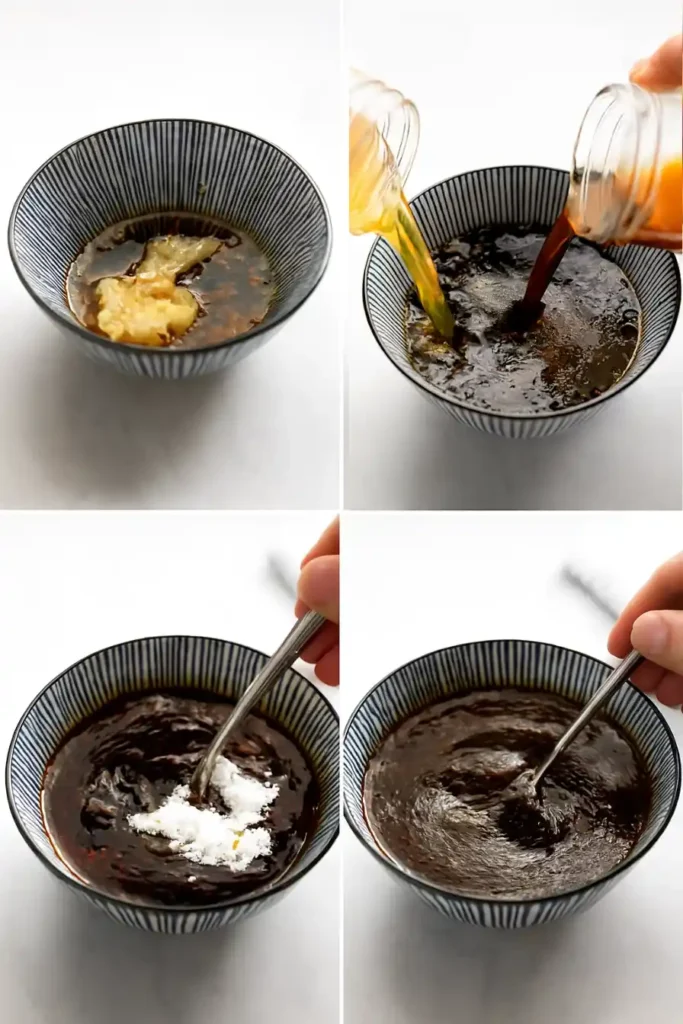
This homemade stir fry sauce comes together in a few easy steps. If you’re also cooking a stir-fry dish from scratch, you can prepare this sauce first so it’s ready to pour in when needed:
- Measure and Mix: In a medium bowl, whisk together the low-sodium soy sauce (or tamari), stock (or water), sesame oil, and rice vinegar. Make sure they are well combined.
- Add the Aromatics: Stir in the minced garlic, grated ginger, and your sweetener of choice (sugar, honey, or maple syrup). If you’d like more bite, toss in extra garlic or ginger.
- Incorporate the Thickener: Sprinkle in the cornstarch and whisk until there are no visible lumps. Make sure your mixture is smooth.
- Optional Heat: Add a pinch of red pepper flakes if you want a mild spicy edge. For a bigger punch, consider adding a teaspoon of chili garlic paste or sriracha.
- Cook to Thicken (Optional): You can pour this sauce directly into your stir-fry while everything cooks on medium-high heat. The cornstarch will activate once it’s heated, creating a thick sauce that coats the ingredients. If you prefer, you can also simmer the sauce in a small saucepan over low heat until it reaches the consistency you like.
- Taste and Adjust: Sample your sauce. If it’s too salty, add more stock or a splash of water. If it’s too sweet, mix in a little more vinegar or soy sauce.
- Use or Store: Once your sauce is thick and balanced, pour it over your stir-fry or reserve it to use later. This recipe is excellent as a stir fry sauce for chicken, stir fry sauce for beef, or stir fry sauce for vegetables.
Cooking a Full Stir-Fry with This Sauce
If you plan to cook a complete stir-fry (with protein and veggies) and want a quick refresher, here’s how to pull it together:
- Prep Your Protein: Start with shrimp or chicken in a hot wok or large skillet. Use a small drizzle of neutral oil like avocado or canola. Cook shrimp about halfway, or cook chicken until it’s close to done but not fully so. Set it aside.
- Sauté Harder Veggies First: In the same pan, add onions, mushrooms, broccoli, or any vegetables that take longer to soften. Cook them until they begin to get tender.
- Add Aromatics: If you’re a garlic lover (or ginger fan), toss in a bit more minced garlic or ginger. Let them become fragrant for about 30 seconds.
- Add Softer Veggies: Now it’s time for items like bok choy, bell peppers, or zucchini. Cook until they’re tender-crisp.
- Reintroduce the Protein: Return your partially cooked protein to the pan.
- Pour in the Sauce: Finally, pour in your prepared sauce. Let everything simmer together until the sauce thickens and your protein is fully cooked.
- Serve: Transfer your stir-fry to a serving platter (or keep it in the wok for a more casual feel). Serve over steamed rice or noodles.
Expert Tips for Success
Balance Your Flavors
- Taste as You Go: It’s helpful to sample the sauce while you whisk it and adjust early. If you wait until the end, you might need more drastic changes that can dilute other flavors.
- Layer Aromatics: If you adore ginger and garlic, don’t be shy. You can even use grated onion or shallots for another depth of flavor.
Control the Thickness
- Double the Cornstarch Slurry: If you want a sauce that almost clings like a glaze, feel free to double the cornstarch. If it turns out too thick, add a splash of warm water or stock and stir.
- Cook the Sauce Separately: Want total control over the texture? Simmer your sauce in a small saucepan first. Once it’s at the thickness you like, fold it into your stir-fry ingredients.
Pick the Right Heat Level
- High Heat is Key: Stir-fries are known for being quick and full of smoky flavor. A wok or heavy skillet on high heat prevents sogginess.
- No Crowding: Overfilling your pan will lower the temperature. This can lead to steamed veggies instead of the crisp-tender texture that we all crave.
Portion Guideline
- Ratio for Protein and Veggies: A good starting point is 1 pound of protein (chicken, beef, shrimp, or tofu) plus about 4 to 6 cups of mixed vegetables for every 1 cup of sauce. If you add extra ingredients, consider making a bit more sauce so everything stays well coated.
Add a Finishing Touch
- Garnish: Once you’ve turned off the heat, sprinkle in some chopped green onions, sesame seeds, or crushed peanuts for a satisfying crunch. This final flourish can upgrade both taste and presentation.
Serving and Storage Tips
- Serve Fresh: Stir-fry dishes are at their best piping hot, right after the sauce thickens. Enjoy it immediately for the crispest veggies and most vibrant taste.
- Refrigeration: If you have leftover sauce (or if you want to make it ahead), store it in an airtight container in the fridge. It will stay fresh for up to a week.
- Freezing: Can you freeze stir fry sauce? Absolutely. Make a batch (or two) and freeze in small portions for about 2–3 months. Let it thaw overnight in the fridge. Give it a stir or quick simmer before using.
- Reheating: Warm leftover sauce on the stovetop over low heat. If it’s too thick, stir in a splash of water or broth.
FoodSafety.gov provides a detailed chart outlining recommended storage durations for various foods in the refrigerator and freezer, ensuring safety and quality.
Helpful Notes
- Double or Triple It: This recipe scales nicely. If you tend to cook stir-fries often, prepare a larger batch of sauce and freeze individual servings.
- Make It Vegan: Replace honey with maple syrup or brown sugar and use vegetable stock. This way, you’ll have an excellent vegan stir fry sauce.
- Low-Sodium Option: Look for low-sodium or even “no salt added” broth. You can also dilute your soy sauce with extra water to reduce the salt level.
- Use with All Proteins and Veggies: Try this sauce with tofu for a plant-based meal, or use it for shrimp, chicken, or beef if you’re craving a meaty dish. It’s also fantastic when poured over stir-fried noodles.
- Marinade Hack: You can even use this sauce as a quick marinade for meats. Mix a small portion of it with a bit of oil, coat your protein, and let it rest for 20 minutes before cooking.
Troubleshooting Common Issues
No sauce recipe is foolproof 100% of the time, but these tips will help you fix common problems right away:
- Too Salty
- Solution: Add a splash of water, stock, or unsalted broth to dilute the salt. A pinch of sugar can also help balance an overly salty flavor.
- Solution: Add a splash of water, stock, or unsalted broth to dilute the salt. A pinch of sugar can also help balance an overly salty flavor.
- Too Sweet
- Solution: Add a small drizzle of rice vinegar or extra soy sauce. The acidity or savory taste will counteract the sugar.
- Solution: Add a small drizzle of rice vinegar or extra soy sauce. The acidity or savory taste will counteract the sugar.
- Not Thickening
- Solution: Make a quick slurry of 1 teaspoon cornstarch mixed with 1 tablespoon of cold water. Stir this into the sauce while it simmers, and it should start to thicken.
- Solution: Make a quick slurry of 1 teaspoon cornstarch mixed with 1 tablespoon of cold water. Stir this into the sauce while it simmers, and it should start to thicken.
- Too Thick or Gluey
- Solution: Whisk in more broth or water until the sauce loosens up. Heat gently to combine.
- Solution: Whisk in more broth or water until the sauce loosens up. Heat gently to combine.
- Grainy Texture
- Solution: This often happens if the cornstarch wasn’t fully dissolved. Next time, whisk the cornstarch in a small bowl with a portion of the sauce before combining with the rest. For now, you can also strain out lumps if needed.
Homemade vs. Store-Bought Comparison Table
A quick glance at how a basic homemade stir fry sauce compares to many store-bought options:
| Aspect | Homemade Stir Fry Sauce | Typical Store-Bought Sauce |
| Flavor | Fresh ginger, garlic, and sesame oil for a bold, bright taste | Often includes preservatives; flavor can be muted or overly sweet |
| Sodium Level | Adjustable (use low-sodium soy sauce, add water) | Often high in sodium |
| Sweetener Options | Sugar, honey, maple syrup, or other natural choices | Refined sugar or high-fructose corn syrup |
| Cost | Budget-friendly with pantry staples | Can be pricier for smaller portions |
| Control | Complete ingredient control, easy to make gluten-free/vegan | Limited variety, fixed formula |
This table shows why a from scratch approach wins for quality, taste, and customization. You get to choose the exact ingredients and flavor balance.
_______________________________________
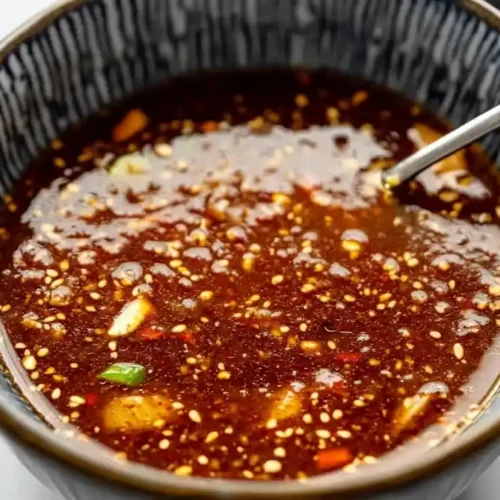
5-Minute Stir Fry Sauce
Equipment
- Whisk
- Quart Sized Mason Jars
- Garlic Press
Ingredients
- 1/2 cup low-sodium soy sauce use tamari or coconut aminos for gluten-free option
- 1/2 cup low-sodium vegetable stock or water use chicken or beef stock for non-vegan versions
- 1 tsp sesame oil
- 1/2 tbsp rice vinegar white or apple cider vinegar can be used
- 2 cloves garlic minced
- 1-2 tsp grated ginger adjust to taste
- 1 tbsp sugar or honey up to 2 tbsp for sweeter taste; use maple syrup for vegan version
- 1 tbsp cornstarch use arrowroot or tapioca starch for alternatives
- red pepper flakes optional for heat
Instructions
- Whisk together soy sauce, stock or water, sesame oil, and rice vinegar in a bowl.
- Stir in garlic, ginger, and sugar or honey until well combined.
- Add cornstarch and whisk until smooth with no lumps.
- Add red pepper flakes if desired. Use immediately or store.
- To thicken, cook sauce in stir-fry or simmer separately until desired consistency is reached.
Notes
- Calories: 16kcal
- Carbohydrates: 3g
- Protein: 1g
- Fat: 1g
- Saturated Fat: 1g
- Polyunsaturated Fat: 1g
- Monounsaturated Fat: 1g
- Sodium: 497mg
- Potassium: 22mg
- Fiber: 1g
- Sugar: 1g
- Vitamin A: 18IU
- Vitamin C: 1mg
- Calcium: 3mg
- Iron: 1mg
Conclusion
A homemade stir fry sauce is an instant ticket to quick, easy, and delicious meals. With just a handful of ingredients—many of which you probably have on hand—you can create a sauce that’s sweet, savory, tangy, and possibly spicy, all in one go. You control every detail, from saltiness to spice level, ensuring your final dish matches your preferences. This approach also gives you space to get creative: experiment with different proteins, vegetables, and garnishes for endless meal possibilities.
If you give this stir fry sauce recipe a try, let us know how it turned out. Feel free to rate it and share a comment below. It’s always exciting to hear how you made it your own. Did you go for a bolder, spicy stir fry sauce? Or did you keep it mild? Share your version so others can get inspired too!
FAQs
1. What is in stir fry sauce?
Stir fry sauce generally contains a salty base (like soy sauce), some sweetness (such as sugar or honey), aromatics (garlic, ginger), and a thickener (often cornstarch). This combination helps coat your stir-fry ingredients with a balance of savory, sweet, and tangy flavors.
2. How to thicken stir fry sauce?
A common method is mixing cornstarch with a bit of cold water (forming a slurry) before adding it to the sauce. As it heats up, it thickens. If you want to skip cornstarch, arrowroot, tapioca, or even a small amount of flour can be used.
3. Can you freeze stir fry sauce?
Yes. Transfer the sauce to a freezer-safe container or a zip-top bag. Freeze for up to 2–3 months. Thaw overnight in the fridge and whisk well before using. This is handy if you want a quick stir fry sauce for chicken or veggies on busy nights.
4. How do I make gluten-free stir fry sauce?
Use gluten-free soy sauce (tamari) or coconut aminos. Also ensure any thickener you pick, like cornstarch or arrowroot, is labeled gluten-free. Skip ingredients that may contain hidden gluten, such as certain broths—verify the label.
5. How can I make this sauce vegan?
Substitute honey with a plant-based sweetener like maple syrup or brown sugar. Use vegetable broth instead of chicken or beef stock. This change gives you a tasty vegan stir fry sauce that’s completely egg-free and dairy-free.
6. Is there a way to make stir fry sauce without cornstarch?
Yes. You can rely on arrowroot or tapioca starch for thickening. Some people reduce the sauce by simmering it for a bit longer to get a thicker consistency. Keep in mind this might alter the final texture slightly.
7. What can I do if my sauce is too salty?
Add water, unsalted stock, or more sugar/honey to balance the saltiness. You can also toss in extra vegetables to diffuse the flavors if the sauce is already in your stir-fry.
8. Which sweetener is best for stir fry sauce?
Any sweetener that dissolves well works fine. White sugar is classic, honey adds extra shine, and maple syrup brings a slightly more robust sweetness. Pick what suits your dietary needs or flavor preference.
9. How do I make a soy-free stir fry sauce?
Replace soy sauce with coconut aminos or a mix of water and a bit of salt, plus a splash of vinegar for tang. Tamari (if it’s labeled soy-free) can also be a solution, but always check labels to confirm.
10. Can I use this sauce for noodles?
Absolutely. This is a great stir fry sauce for noodles. Cook your noodles, add them to a hot pan with veggies or protein, then pour the sauce in and toss. The cornstarch helps it cling to every strand.
11. What are some stir fry sauce uses or ideas beyond stir-fries?
Think of this sauce as a universal glaze. Use it as a marinade for chicken or tofu, spoon it over roasted vegetables, or even drizzle it on top of rice bowls. It’s also a tasty dip for steamed dumplings or spring rolls.

